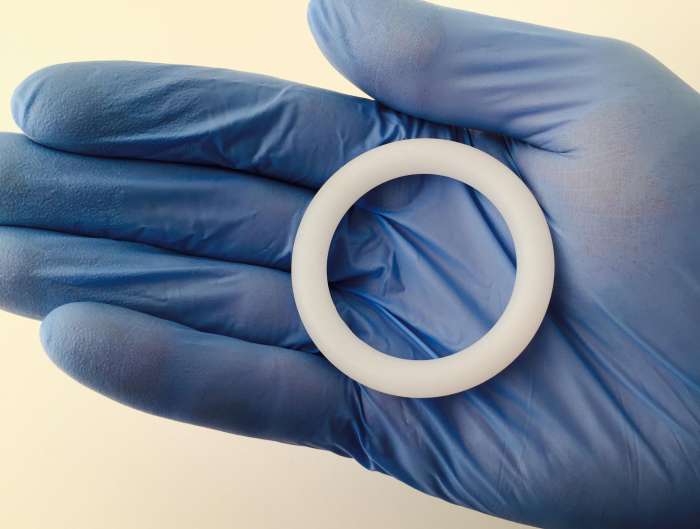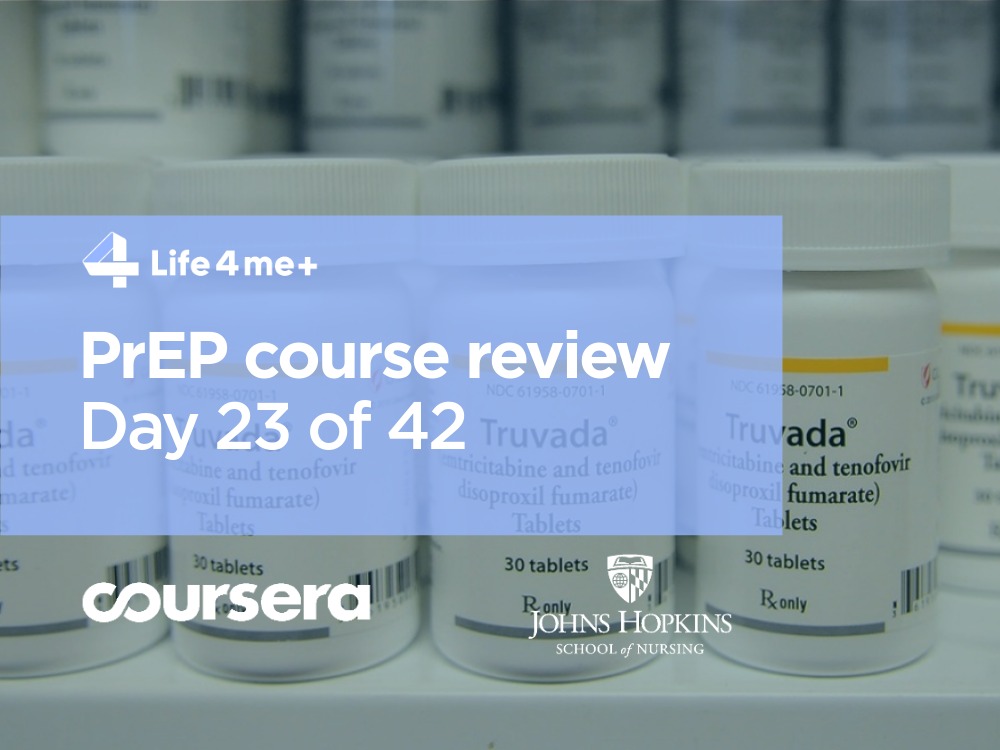HIV Pre-Exposure Prophylaxis (PrEP) Online Course at Coursera Review. Day 12 of 42.

In the 12th lesson of the PrEParing course “PrEP Pipeline,” Neha Pandit from the School of Pharmacy at the University of Maryland has examined clinical studies of new drugs for PrEP in more detail.
Clinical studies of new medicines for PrEP have already been discussed in the 10th lesson. If you are interested in learning about the studies of tenofovir alafenamide (TAF), maraviroc, cabotegravir, dapivirin, VRCO1 and EFdA / MK-8591 — feel free to read about it in the review of the 10th lesson of the PrEParing course.
Vaginal rings
Let us consider in more detail vaginal rings for PrEP with dapivirine. The polymer ring contains 25 mg of dapivirin, the drug is slowly released through the pores within 30 days within the virginal area of the vagina and enter the vaginal mucosa, protection from exposure to HIV locally.

Figure 1 — A silicone vaginal ring with dapivirine for PrEP identical to those used in the ASPIRE trial. Credit: NIAID https://www.flickr.com/photos/niaid/25153111944
Such a ring inserted monthly, and it reaches sufficient concentration eight hours after insertion comparing to tablets for PrEP begin to work after 2-7 days of consistent intake. Prescribing vaginal rings for PrEP on the day of assessment provides protection to a woman within eight hours — this is necessary for outreach programs when volunteers and social workers, with the support of charity funds or government programs, visit vulnerable communities at high risk of exposure to HIV. Conducting HIV testing and the distribution of such vaginal rings to the PrEP can potentially reduce the spread of the HIV epidemic in such communities.
In the tenth lecture, the instructor discussed a clinical study of vaginal rings, which showed a 27% reduction in the risk of HIV transmission among African-American women in the United States. Another study involved 2,000 African-American women showing a 30% drop in the risk of HIV transmission.
As already noted in the 10th lecture that a spontaneous finding of the first clinical study on 2,600 women showed that vaginal rings for PrEP were less effective in patients who were less than 21. Researchers are testing hypotheses to explain this fact.
Conclusions
Pre-exposure prophylaxis studies focus on the development of safe and effective drugs and delivery methods. Scientists are looking for ways to reduce the toxic effects, testing methods of local PrEP delivery, such as vaginal and anal rings and gels. They also study how drug concentrations are distributing in the mucosal tissues of the mouth, vagina, cervix, and rectum.
Also, it’s all about improving the adherence to medication regimens. A lot of effort is focused on the extension of PrEP, which can be taken less often, up to one injection every six months. In this blog on the mobile application for HIV-positive people Life4me+ website, we would like to share our experience.
The developers of the Life4me+ application have found positive reports in a series of scientific articles, which described implementing mobile health technologies to increase adherence to drugs intake among people living with HIV. For example, this is the article by Donaldson F Conserve with co-authors “Systematic review of mobile health behavioral interventions to improve uptake of HIV testing for vulnerable and key populations,” published April 6, 2016, in the Journal of Telemedicine and Telecare. The developers in Life4me+ tried to apply similar ideas in practice. They introduced the “flexible alarm” into the mobile app — an HIV-positive user needs only to adjust the intervals for taking medications, and the phone will notify about drug intake in random time within range.
Users of the Life4me+ app found this function helpful. Doctors also evaluated “flexible alarm” function commenting that it is especially useful in the early years of taking antiretroviral drugs. Probably, the experience of the Life4me+ application will be suitable for people taking PrEP not to forget to take pills daily and stay protected from HIV.
So, lecture of Dr. Neha Pandit came to an end. Tomorrow we will sum up the second week of the PrEParing course.
If you have not already signed up for the PrEParing course on the Coursera platform — it’s never too late to do it, just go to https://www.coursera.org/learn/prep.
Stay with us and stay healthy!



